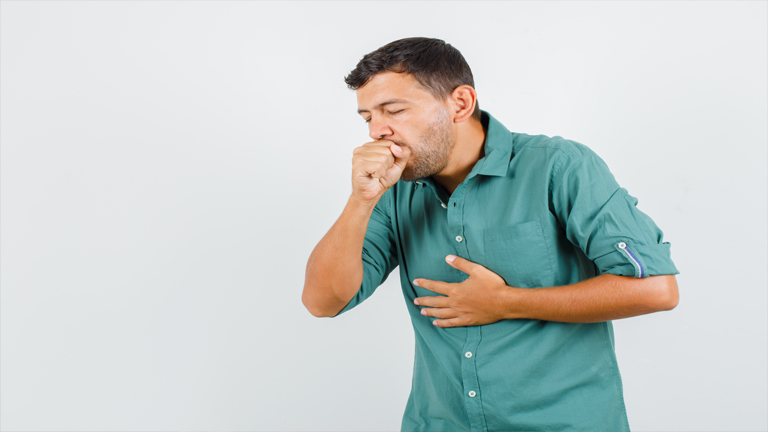Whooping cough, also known as pertussis, is a highly contagious respiratory infection caused by the bacterium Bordetella pertussis. Despite the availability of vaccines, whooping cough remains a significant public health concern, particularly for infants and young children. This article provides a comprehensive guide on whooping cough, including its symptoms, causes, treatment options, and prevention strategies.
Must Check: Bird Flu
What Is Whooping Cough?
Whooping cough is a bacterial infection that affects the respiratory tract, leading to severe coughing fits. The name “whooping cough” comes from the distinctive “whooping” sound patients make when gasping for air after a coughing episode. The disease can be life-threatening, especially in babies under one year old.
Symptoms of Whooping Cough
Whooping cough symptoms typically develop in stages and can last for several weeks. The three main stages include:
1. Catarrhal Stage (First 1-2 Weeks)
-
Mild cold-like symptoms
-
Runny nose
-
Low-grade fever
-
Mild, occasional cough
-
Sneezing
2. Paroxysmal Stage (Next 1-6 Weeks)
-
Severe coughing fits followed by a “whooping” sound when inhaling
-
Vomiting after coughing
-
Exhaustion due to persistent coughing
-
Red or blue face from intense coughing
3. Convalescent Stage (Recovery Phase)
-
Gradual decrease in coughing intensity
-
Symptoms slowly improve over weeks to months
Infants may not produce the classic “whoop” sound but can experience apnea (pauses in breathing), which is particularly dangerous.
Causes and Transmission of Whooping Cough
Whooping cough is caused by Bordetella pertussis, a bacterium that attaches to the lining of the airways. The infection spreads through:
-
Airborne droplets (when an infected person coughs or sneezes)
-
Close contact with an infected individual
-
Contaminated surfaces (less common)
Unvaccinated individuals, infants, and people with weakened immune systems are at the highest risk.
Diagnosis of Whooping Cough
Doctors diagnose whooping cough through:
-
Medical history and symptom evaluation
-
Nasopharyngeal swab (to test for bacteria)
-
Blood tests (to check for infection markers)
-
Chest X-rays (to rule out pneumonia)
Early diagnosis is crucial to prevent complications.
Treatment Options for Whooping Cough
Treatment depends on the patient’s age and severity of symptoms. Common approaches include:
1. Antibiotics
-
Macrolides (azithromycin, erythromycin, clarithromycin) are the first-line treatment.
-
Early antibiotic use can reduce symptom severity and prevent spread.
2. Supportive Care
-
Hydration to prevent dehydration from vomiting
-
Rest to help recovery
-
Humidifiers to ease coughing
-
Hospitalization for severe cases (especially infants)
3. Prevention of Spread
-
Infected individuals should avoid contact with others, especially babies and pregnant women.
Complications of Whooping Cough
If left untreated, whooping cough can lead to:
-
Pneumonia (most common complication)
-
Ear infections
-
Seizures (due to lack of oxygen)
-
Brain damage (rare but severe in infants)
-
Rib fractures (from intense coughing)
Infants under six months are at the highest risk of life-threatening complications.
Prevention and Vaccination
The best way to prevent whooping coughs is through vaccination. Key strategies include:
1. DTaP Vaccine (For Children)
-
Given at 2, 4, and 6 months, with boosters at 15-18 months and 4-6 years.
2. Tdap Vaccine (For Adolescents and Adults)
-
A booster shot recommended for preteens (11-12 years) and adults every 10 years.
-
Pregnant women should get Tdap during the third trimester to protect newborns.
3. Herd Immunity
-
High vaccination rates reduce community spread.
4. Hygiene Practices
-
Covering mouth when coughing
-
Frequent handwashing
-
Avoiding close contact with infected individuals
Whooping Cough (Pertussis) Overview Table
| Category | Details |
|---|---|
| Causative Agent | Bordetella pertussis (bacteria) |
| Transmission | Airborne droplets (coughing/sneezing), close contact |
| Incubation Period | 5–10 days (range: 4–21 days) |
| Contagious Period | From onset of cold-like symptoms until 3 weeks after coughing starts (or until 5 days after antibiotics) |
| High-Risk Groups | Infants (<1 year), unvaccinated individuals, pregnant women, immunocompromised people |
| Key Symptoms | Severe coughing fits, “whooping” sound, vomiting, exhaustion, apnea (in infants) |
| Diagnosis | Nasopharyngeal swab, PCR test, blood tests, chest X-ray (if complications suspected) |
| Treatment | Antibiotics (azithromycin, erythromycin), supportive care (hydration, rest), hospitalization for severe cases |
| Complications | Pneumonia, seizures, rib fractures, brain damage (rare in infants) |
| Prevention | DTaP vaccine (children), Tdap booster (teens/adults), maternal vaccination (3rd trimester), good hygiene |
| Mortality Rate | ~1% in infants (higher if untreated) |
Whooping Cough in Babies and Pregnant Women
Infants are most vulnerable because:
-
They cannot receive the vaccine until two months old.
-
Their immune systems are underdeveloped.
Pregnant women should get vaccinated to pass protective antibodies to their babies.
Myths and Facts About Whooping Cough
Myth 1: “Whooping coughs is just a bad cold.”
Fact: It can lead to severe complications, especially in infants.
Myth 2: “Vaccines are not necessary.”
Fact: Vaccination is the most effective prevention method.
Myth 3: “Only children get whooping coughs.”
Fact: Adults can get it, and symptoms may be milder but still contagious.
When to See a Doctor
Seek medical attention if:
-
Coughing lasts more than two weeks
-
Coughing causes vomiting or breathing difficulties
-
A baby shows signs of apnea or bluish skin
Conclusion
Whooping coughs is a serious but preventable disease. Vaccination remains the best defense against severe illness and complications. Recognizing early symptoms, seeking prompt treatment, and practicing good hygiene can help control outbreaks. If you or your child develop symptoms, consult a healthcare provider immediately.
By staying informed and proactive, we can reduce the impact of whooping coughs and protect vulnerable populations.

